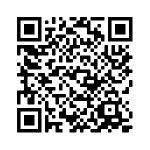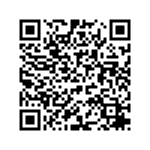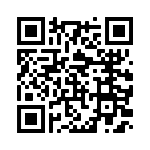Mechanics: Identify and apply principles of force
Unit 1: What is a force?
Linda Pretorius
Unit outcomes
By the end of this unit you will be able to:
- Define a force.
- Describe different types of forces.
- Identify examples of different types of forces.
- Describe that forces work in pairs.
- Identify interacting force pairs as applies to:
- contact forces
- non-contact forces.
What you should know
Before you start this unit, make sure you can:
- Define a frame of reference. Subject Outcome 2.1, Unit 1.
- Distinguish between a vector and a scalar quantity. Subject Outcome 2.1, Unit 3.
Introduction
In this unit you will learn what a force is and find out about different types of forces. This will allow you to identify forces at work in your everyday life and understand the effects of forces.
Activity 1.1: Think about forces
Time required: 5 minutes
What you need:
- an internet connection
- a cellphone with a QR scanner
What to do:
Watch the video clip.
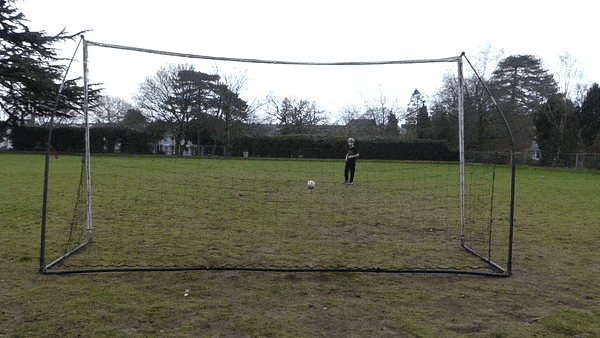
Describe to a friend, someone at home or just for yourself what you see happening.
What did you find?
In the video, we see a ball lying still on the ground. We say it is at rest. When the boy kicks the ball, it lifts off the ground and moves through the air, towards the net. When it hits the net, the ball’s motion changes. The shape of the net also changes. The ball then falls to the ground, rolls along for a while, and then comes to rest again. The net wobbles in the frame for some time, until it, too, stops moving.
Definition of force
Everything we saw happening in the video was caused by . The easiest way to think about force is that it is a push or a pull. But an important additional point to understand is that a push or a pull is the result of one object interacting with another.
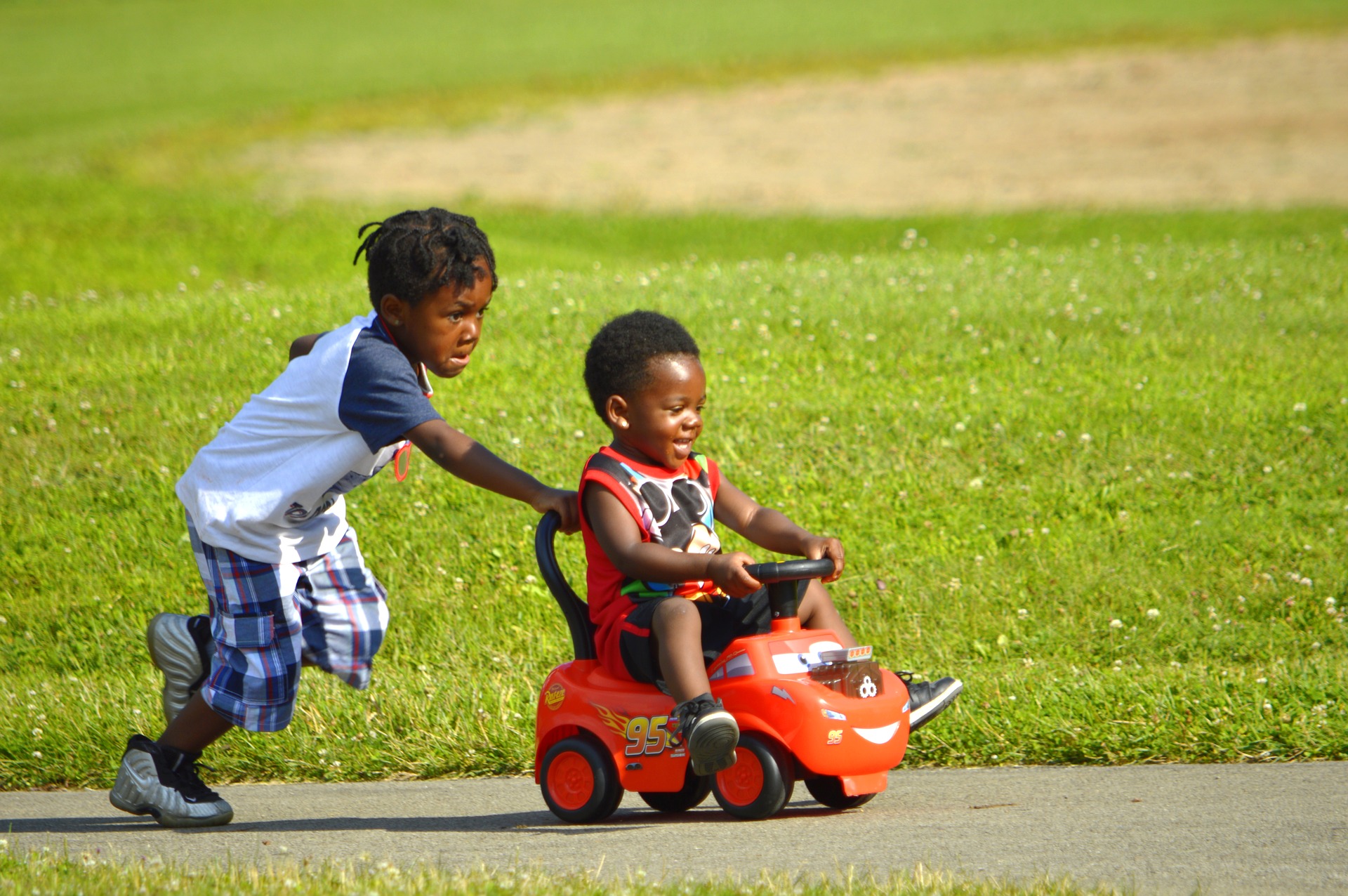

The video clip in Activity 1.1 shows us some important things about forces and how they work.
The interaction between objects can happen because of their direct contact with each another. This is called a contact interaction.
At the start, the ball was at rest on the ground. Because the ball touched the ground and the ground touched the ball, we know that this was a contact interaction. Understanding force as the result of an interaction between objects, we can say that the ball exerted a force on the ground and that the ground exerted a force on the ball.
When the boy kicked the ball, his foot touched the ball and the ball also touched his foot. Through the contact interaction, the boy’s foot exerted a force on the ball and the ball exerted a force on his foot.
The interaction between objects can be caused by invisible surrounding fields interacting with each other. This is called a field interaction.
At the end of the video clip, we see the ball dropping down to the ground, without contact with another object. This is the result of the interaction between the gravitational fields around two objects, namely the Earth and the ball. Field interactions are non-contact interactions because the objects are not touching each other.
Every object that has also has a surrounding gravitational field. The Earth’s gravitational field is much bigger than that of the ball. This is because the Earth has much more mass than the ball and so exerts a bigger force on the ball than the ball on the Earth.
Forces work as interacting pairs.
As force is the result of an interaction between two objects, it follows that the objects will each exert a force on the other, in opposite directions. For example, the ball lying on the ground pushes down on the ground, and the ground pushes up on the ball.
Force is a vector quantity. It has size and direction.
Force is measured in newtons (N). When we describe a force, we must mention both its magnitude (size) and its direction. For example:
- The ball lying at rest exerts a force of a certain magnitude downwards.
- The boy’s foot on the ball exerts a force of a certain magnitude forward and to the right.
When we describe a force quantitatively – in other words, as a numerical value – the number tells us its size, and the sign – positive or negative – tells us its direction relative to a predefined frame of reference. For example, if we define up as the positive vertical direction, we know that a force with a negative value acts downwards.
Note
Look back to Subject Outcome 2.1, Unit 1 if you need to revise the concept of a frame of reference.
We cannot see forces themselves, only their effects.
We can see the effect of a force by looking at an object’s shape or motion. A force can cause an object to remain as it is or cause a change in its shape or motion. In the video clip we saw:
- force causing a change in an object’s shape when the ball hit the net and made the net bulge out
- force affecting the speed at which an object moves, when the boy kicked the stationary ball to make it move, or the ball rolling slower and slower along the ground until it eventually stopped
- force affecting the direction in which an object moves, such as when the ball hit the net and rolled away from the net.
A change in an object’s shape or motion is caused by unbalanced forces acting on the object. When the forces acting on an object are balanced, its shape or motion will remain unchanged.
The ball fell to the ground because the gravitational force of the Earth pulling the ball downwards was bigger than the gravitational force of the ball on the Earth. That means that in this interacting force pair, the force acting downwards and the one acting upwards were unbalanced, and so the ball’s motion changed.
When the ball lay on the ground, it was acted on by the force of gravity. Yet it lay still; its motion or shape did not change. This tells us that a force equal in size but opposite in direction was also acting on the object. We say two such counteracting forces acting on an object balance each other.
The effect of a force is the sum of all the forces acting on an object.
Forces are additive, like all vector quantities. If the two forces in an interacting pair have equal magnitudes but opposite signs, the will be zero. If the two forces have unequal magnitudes, the sum will be a non-zero value, which means the net effect will be in the direction of the force with the bigger magnitude.
Note
Resultant force is also called net force.
Take note!
If you want to explore the effects of pushes and pulls and the effect of the resultant force on an object, try this simulation. See how the amount of force changes when you change the mass of the object you are trying to move.
Types of force
Understanding a force as the result of an object’s interaction with another object allows us to classify forces according to two broad categories:
- result from contact interactions, in other words when two objects touch each other.
- result from objects interacting with each other at a distance, without direct contact between them. These interactions are due to the fields around objects interacting with each other.
In the next two activities, you will explore different types of forces in each category. Being able to correctly identify the types of forces acting on an object will help you to draw force diagrams, which you will learn about in the next unit.
To identify the types of force acting on an object, always ask how the object is interacting with its surroundings.
Activity 1.2 Investigate non-contact forces
Time required: 5 minutes
What you need:
- a (non-fragile) object made of wood, plastic or metal
- two magnets
- some metal paper clips or drawing pins
- a plastic ruler
- a dust cloth
- small pieces of paper
What to do:
|
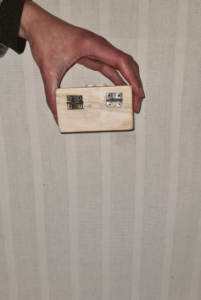
|
|
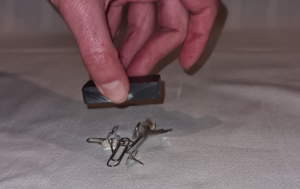 |
|
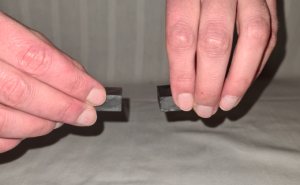 |
|
 |
What did you find?
From your observations you will be able to describe examples of non-contact forces:
- When you released the object you held above the ground, it fell downwards. As you know by now, the motion or shape of an object changes when an unbalanced force acts on it. Therefore, a force must have been acting on the object to make it fall down.
.
The force at work here was a gravitational force, often simply called gravity. We can write it as FG. Gravity is a non-contact force that exists between any two objects with mass because they attract each other. This is known as the law of universal gravitation. You will learn more about this in Unit 3.
.
The effect of gravitational force is most notable when one of the objects is much more massive than the other. This is what we experience on Earth: the Earth’s gravitational force is much bigger than other objects on Earth, and so all objects close to the Earth’s surface are attracted downwards, towards the Earth. - When you held the magnet above the paper clips or pins, you would have noticed that they were attracted towards the magnet, without direct contact exerting a force. Similarly, when you brought the two magnets towards each other (whether with opposite or like poles facing each other), you would have felt either a pull or a push between them, again without their touching each other. Both these effects are caused by magnetic force, which results from the items interaction with the magnetic field.
- When you rubbed the plastic ruler with the dust cloth, the ruler became electrostatically charged. This means it had an excess of one type of charge. When you held the charged ruler above the pieces of paper, they were attracted to the ruler. This is due to the interaction of electric fields between the ruler and the paper, which caused an electric force. The size of the field around the charged ruler was stronger than that around the pieces of paper, and therefore the pieces of paper moved in the direction of the ruler.
Note
- If there is a magnet near an object, there will be a magnetic force.
- If there is a charged object near an object, there will be an electric force.
- If there is a planet (or other massive body) near an object, there will be a gravitational force. All objects on Earth are therefore acted on by the Earth’s gravitational force.
Activity 1.3 Investigate contact forces
Time required: 10 minutes
What you will need:
- two different objects, each with a flat surface and ideally of different masses, e.g. a plastic tub, a block of wood, a brick, a book, etc.; you should be able to hold the object in your hand
- a flat surface, e.g. a small table, a chair or a cutting board
- an elastic band
- rope or string
- a bottle top
- a marble or small stone
- a bowl of water
What to do:
- Hold one of the objects in your hand, as shown. What do you experience?
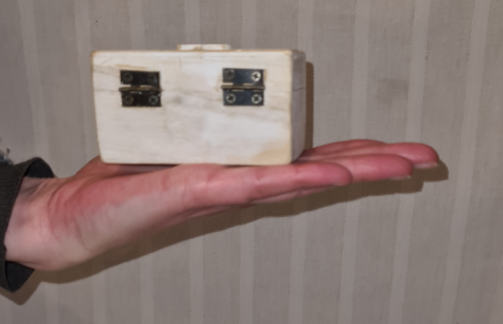
- Now hold both objects in your hand. What do you notice now?
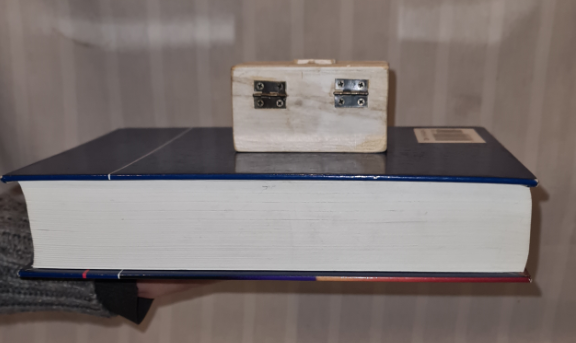
- .
- Place one of the items on a flat surface. What do you notice?
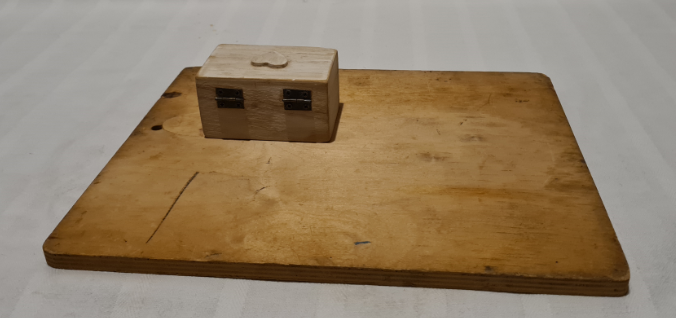
- Push against the object to make it move forward. Did you have to push hard or only a little? Does it keep on moving indefinitely?

- Repeat steps a) and b) with the other object. What is different? What is the same?
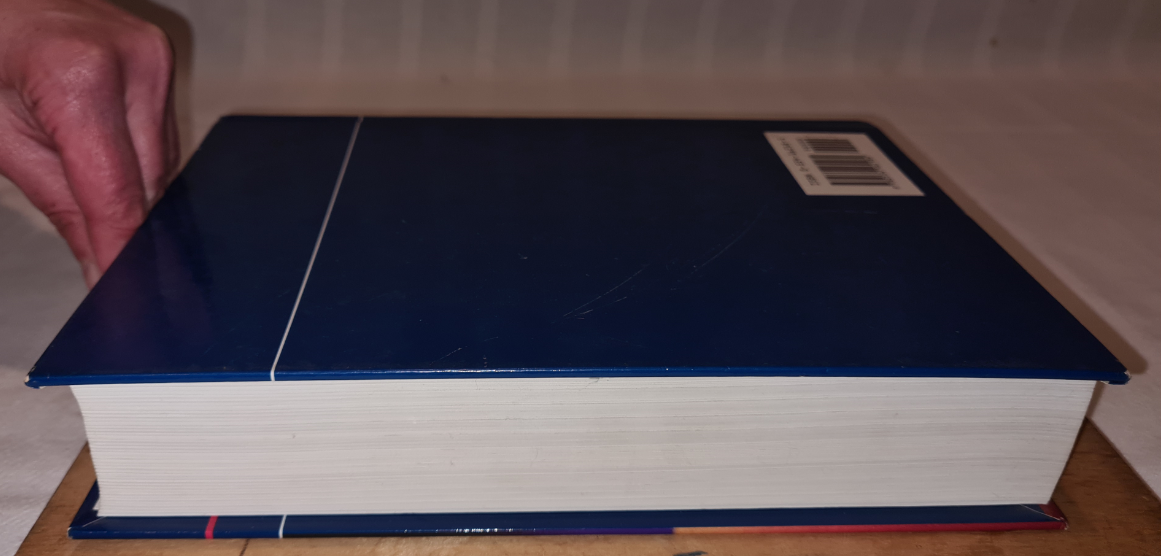
- Place one of the items on a flat surface. What do you notice?
- Tilt the surface slightly upwards. What happens to the object? What happens when you tilt the surface even more?
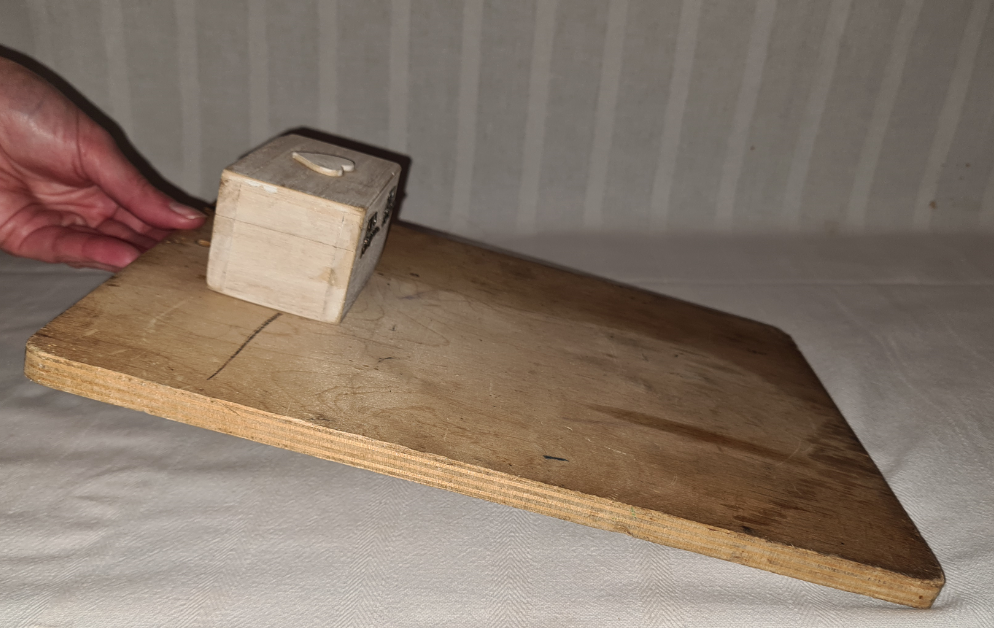
- Attach the elastic band to a fixed point. Hook your finger through the free end and pull on it, and then release a little. What interactions do you observe?
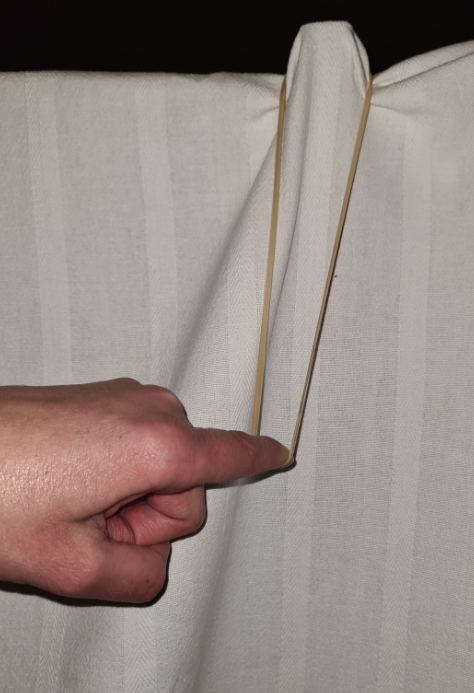
- Tie the rope around a fixed point (e.g. the leg of a table, a lamp post or tree). Pull on the rope. What do you observe?
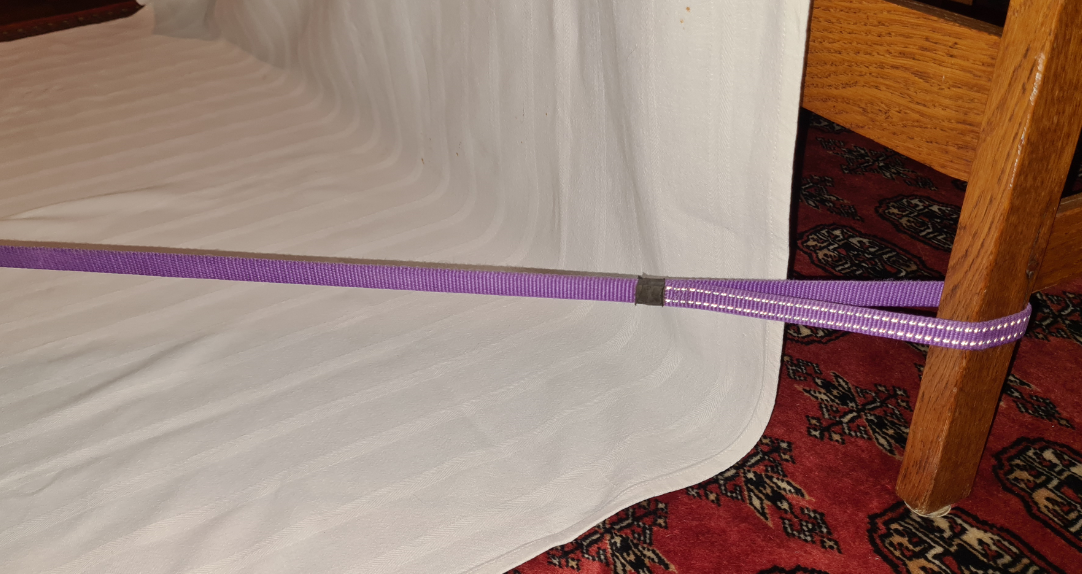
- .
- Put the bottle top in the bowl of water. What do you notice? How is this brought about by forces?

- Now put the marble or small stone in the water. Is the effect the same as when you put the bottle top in the water? Why do you think this happens?

- Put the bottle top in the bowl of water. What do you notice? How is this brought about by forces?
What did you find?
- When you held an object in your hand, you would have experienced two forces acting on it. You already know that all objects on Earth are acted on by the Earth’s gravitational force, which acts downwards. But you also know that forces work in interacting pairs. So, because the object was at rest in your hand, your hand must have exerted a force equal in size to the gravitational force, but opposite in direction. In other words, the counteracting force must have acted upwards on the object. This upward force is called the normal force. The normal force is always present when an object rests on a surface and always acts to the surface. Normal force is often written as FN.
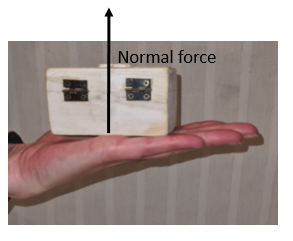
Note
In physics, ‘normal’ means ‘perpendicular’..
- When you held both objects in your hand, you would have experienced the effect of gravity and the counteracting normal force in an even more pronounced way. Gravity acted downwards on both objects and a combined normal force of equal magnitude acted upwards. Remember that although there were two different interactions (between the bottom object and your hand, and between the bottom and top object), the individual downward and upward forces added up (and balanced out).
- When you placed the object on the flat surface, both gravity and the normal force acted on the object. Again, they balanced each other, and so the object did not move up or down. Gravity and the normal force would also have acted when you tilted the surface. However, in this case the two forces would not have been in directly opposite directions, because gravity acts vertically down, whereas the normal force acts perpendicular to the surface on which the object rests.
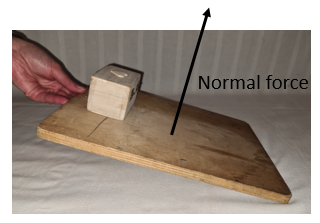
- When you pushed against the object to make it move over the flat surface, it experienced an unbalanced applied force in the horizontal direction. We can write this as FA.
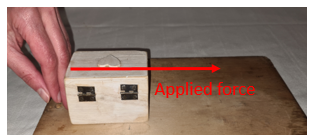
- The object later slowed down and eventually came to rest due to a frictional force, often written as Ffriction or Ff. Friction is a force that opposes motion and acts in the direction opposite to that of the motion. Friction always exists when two surfaces are in contact with each other, but is most notable when a surface moves over another.
.
All surfaces exert a frictional force to some extent. For an object to move over another, the inherent frictional force must be overcome. This is why an object will remain at rest up to a certain point on an inclined plane. You will learn more about this in the next unit. - An object that can stretch and return to its original length exerts an elastic force. You observed this when you tied the elastic band to a fixed point and hooked your finger through the free end to pull on it. As your finger pulled on the elastic band, it pulled back in the opposite direction. When you reduced the amount of force exerted by your finger, the force exerted by the elastic band pulled your finger back in the opposite direction.
- When you pulled on the rope tied to a fixed point, you would have experienced a tension force. Tension force exists in a rope, cable, chain or string pulled tight. This is not an elastic force because the rope or cable does not stretch further than its original length when it is pulled tight.
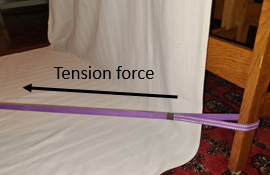
- Objects placed in water experience a buoyant force. When an object floats, like the bottle top, it means the downward force exerted by the object on the water is balanced by the upward force of the water on the object. However, when an object sinks, like when you put the marble in the bowl of water, it means that the object exerts a bigger downward force on the water than the upward force of the water on the object.
- Air and water resistance are two further examples of contact forces, but we did not explore them in the activity. Air or water resistance is a force that opposes the motion of an object that moves through a fluid such as a gas or a liquid. Air or water resistance can also be called a drag force.
Take note!
Explore the forces acting on an object in this simulation:
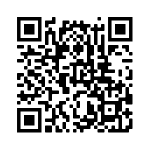
Create an applied force and see the resulting friction force and total force acting on the object. You can also view the diagrams to see how gravity and the normal force apply.
Summary
In this unit you have learnt the following:
- A force is a push or a pull that results from the interaction between two objects.
- Interactions can involve direct contact or occur at a distance. We therefore distinguish between contact interactions and non-contact interactions.
- Because forces are the result of interactions, we can distinguish between contact forces and non-contact forces.
- Examples of non-contact forces are gravitational force, magnetic force and electric force.
- Examples of contact forces include the normal force, friction, tension, air or water resistance, buoyant force, elastic force and applied force.
- Forces act in interacting pairs on an object.
- We cannot see a force, only its effects.
- Force is a vector: it has both size and direction. Like all vectors, forces are additive.
- Forces affect an object’s shape or motion. If a force changes an object’s shape or motion, it means a non-zero resultant force acts on the object.
Take note!
Watch the video called ‘How objects interact’ (duration: 03:17) for a quick recap of forces.
Unit 1: Assessment
Suggested time to complete: 15 minutes [1]
- An unbalanced force acts on an object. Name three effects that the force can have on the object.
- Identify each of the following forces as either contact or non-contact forces.
- The force between a magnet and a paper clip.
- The force required to open the door of a taxi.
- The force required to stop a soccer ball.
- The force causing a ball, dropped from a height, to fall to the floor.
- Watch the following video clip:
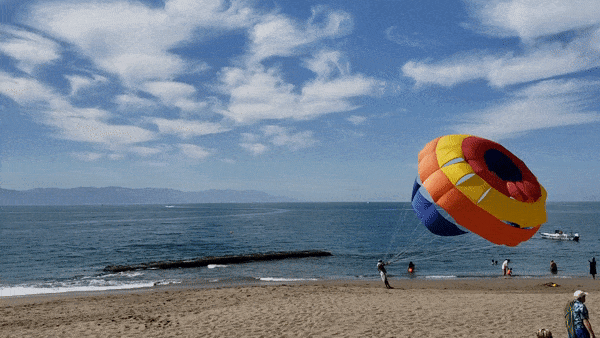
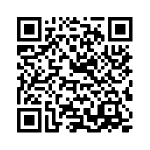
- Identify one push and one pull force acting in the video.
- Classify each of the forces in (a) as a contact force or a non-contact force. Give a reason for each answer.
- Look at the person handling the kite. Do his hands exert a force on the kite? Give a reason for your answer.
- Look at the rock in the video. What is the resultant force acting on the rock, and in which direction does it act? Describe how you formulated your answer.
- The photo shows a bakkie with a trailer loaded with logs parked alongside the road. Identify two interacting force pairs in the photo.
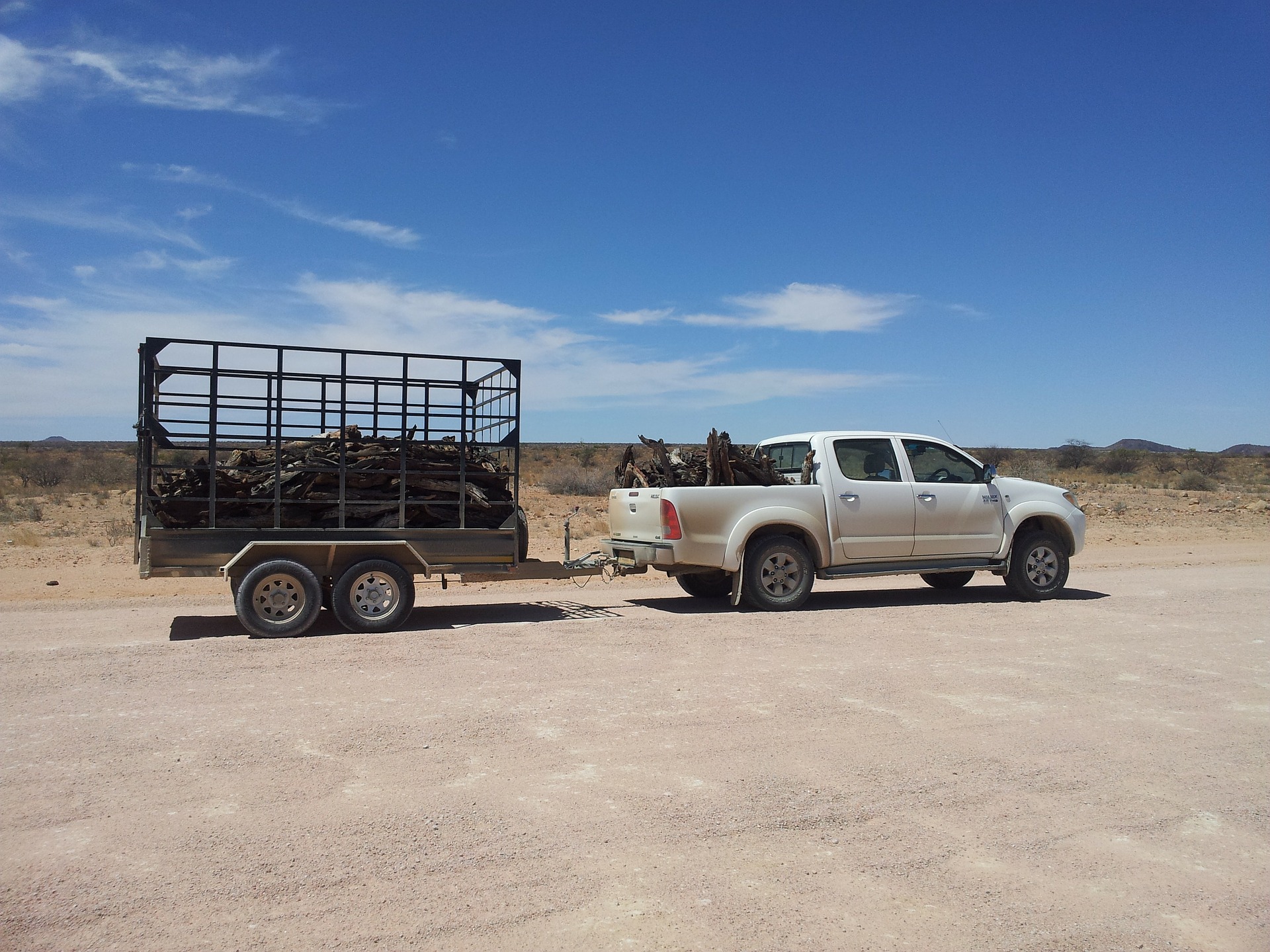
- In each picture, identify the force(s) acting on the indicated object and say whether they are balanced or unbalanced.
- The book at the top of the stack

- The skydiver
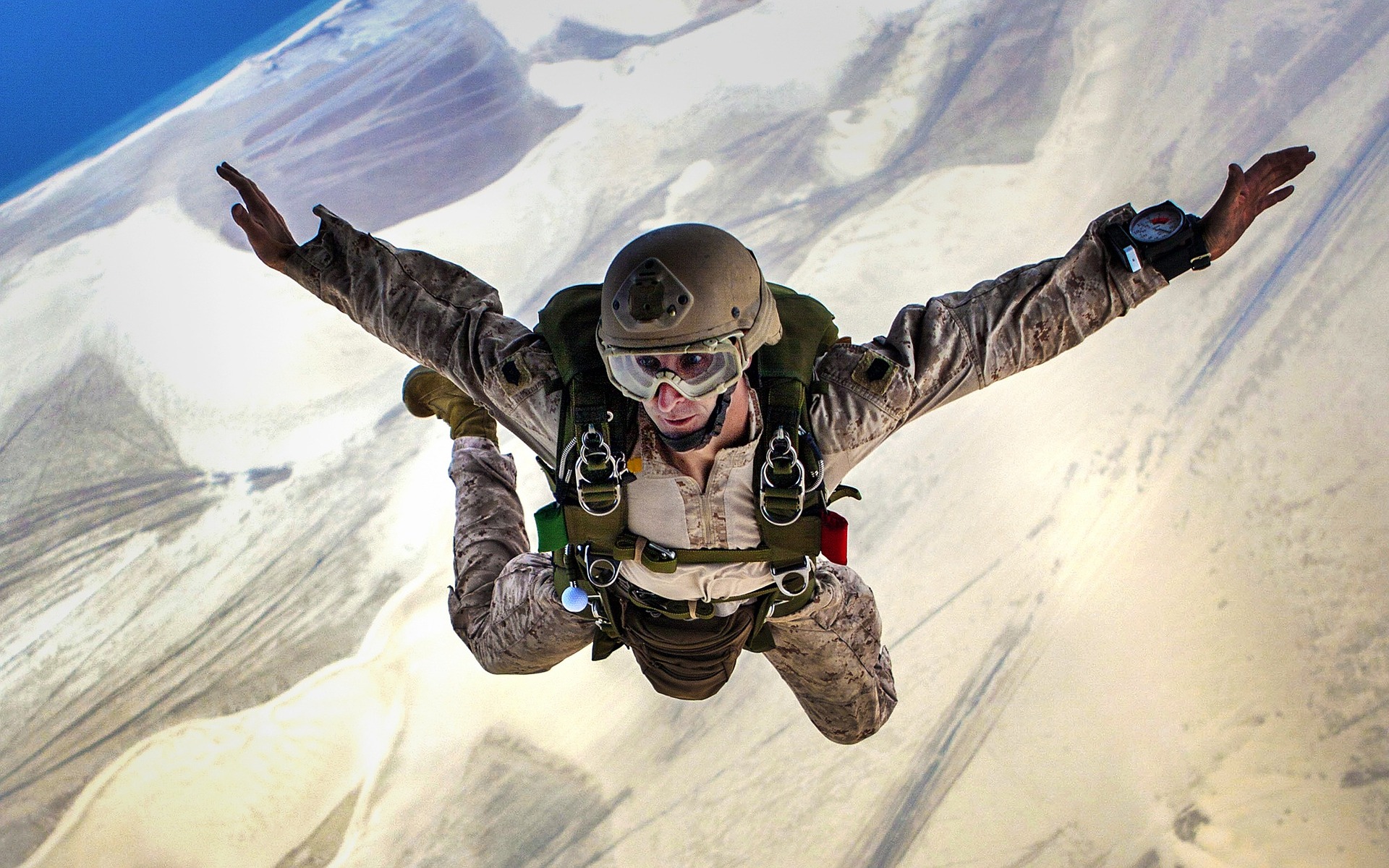
- The signboard

- The book at the top of the stack
The full solutions are at the end of the unit.
Unit 1: Solutions
Unit 1: Assessment
- The force can change the shape of the object.
The force can change the direction in which the object is moving.
The force can change the speed at which the object is moving (make it move from rest; cause it to accelerate or slow down; make it stop). - .
- Non-contact force
- Contact force
- Contact force
- Non-contact force
- .
- Examples of push forces: water pushing against the rock; air pushing against the kite.
Examples of pull forces: man pulling on the strings of the kite; gravity acting on person’s feet; tide pulling wave back into the sea. - Contact forces apply between objects or surfaces that are in contact with each other. For example: water pushing against the rock; air pushing against the kite; man pulling on the strings of the kite (tension).
.
A non-contact force acts at a distance, without making contact with the object on which it acts. For example: the Earth’s gravity pulling objects downwards; the Moon’s gravity acting on the Earth to cause the tides (and therefore the waves rolling into the beach and pulling back). - No, his hands are applying a force to the strings. The strings are pulling on the kite.
- The resultant force is zero, because the rock is stationary. There is no movement in the vertical direction, which means the force of gravity and the normal force are of equal magnitude but in direct opposite directions. There also is no movement in the horizontal direction, which means the force of the water against the rock does not overcome the frictional force exerted by the sea floor on the rock.
- Examples of push forces: water pushing against the rock; air pushing against the kite.
- Possible answers:
- The trailer pulls to the left on the bakkie’s tow bar, and the tow bar pulls to the right on the trailer.
- The wheels push down on ground and the ground pushes up on the wheels.
- The pile of wood pushes down on the base of the trailer and the base of the trailer pushes up on the pile of wood.
- One log pushes down on another and the other pushes up on the log above.
- .
- Gravitational force acting downwards; normal force of the surface (of the stack of books) acting upwards. The forces in the vertical direction are balanced, because the book is stationary.
- Gravitational force only, acting downwards; air resistance is negligible. The forces in the vertical direction are unbalanced because the skydiver is falling downwards.
- Gravitational force acting downwards on the board; two upward tension forces acting upwards, one at each chain. The forces in the vertical direction are balanced because the board is hanging still.
Media Attributions
- Vid01_Football © Ferdster is licensed under a CC0 (Creative Commons Zero) license
- QR_Code_PSL2SO22U1_1
- Img02_Pull © Chris Thornton is licensed under a CC0 (Creative Commons Zero) license
- Img01_Push © Hung Vu is licensed under a CC0 (Creative Commons Zero) license
- QR_Code_PSL2SO22U1_2
- Img03_Falling object © DHET is licensed under a CC BY (Attribution) license
- Img04_Magnet and paper clips © DHET is licensed under a CC BY (Attribution) license
- Img05_Magnetic force © DHET is licensed under a CC BY (Attribution) license
- Img06_Electrostatic force © DHET is licensed under a CC BY (Attribution) license
- Img07_Object in hand © DHET is licensed under a CC BY (Attribution) license
- Img08_Two objects © DHET is licensed under a CC BY (Attribution) license
- Img09_Object on cutting board © DHET is licensed under a CC BY (Attribution) license
- Img010_Sliding object1 © DHET is licensed under a CC BY (Attribution) license
- Img011_Sliding object2 © DHET is licensed under a CC BY (Attribution) license
- Img012_Inclined plane1 © DHET is licensed under a CC BY (Attribution) license
- Img013_Elastic band © DHET is licensed under a CC BY (Attribution) license
- Img014_Taut rope © DHET is licensed under a CC BY (Attribution) license
- Img015_Bottle top © DHET is licensed under a CC BY (Attribution) license
- Img016_Marble © DHET is licensed under a CC BY (Attribution) license
- Img017_Normal force © DHET is licensed under a CC BY (Attribution) license
- Img018_Normal force 2 © DHET is licensed under a CC BY (Attribution) license
- Img019_Applied force © DHET is licensed under a CC BY (Attribution) license
- Img020_Tension force © DHET is licensed under a CC BY (Attribution) license
- QR_Code_PSL2SO22U1_3
- QR_Code_PSL2SO22U1_4
- Vid03_Beach © wildeva1960 is licensed under a CC0 (Creative Commons Zero) license
- QR_Code_PSL2SO22U1_5
- Img021_Force pairs © garygee is licensed under a CC0 (Creative Commons Zero) license
- Img022_Books © AnnieSpratt is licensed under a CC0 (Creative Commons Zero) license
- Img023_Skydiver © skeeze is licensed under a CC0 (Creative Commons Zero) license
- Img024_Signboard © David D is licensed under a CC0 (Creative Commons Zero) license
- Questions 1 and 2 were sourced from Siyavula Physical Science Gr 11 Learner’s Book, p. 120, released under a CC-BY licence at https://www.siyavula.com/read/science/grade-11/newtons-laws/02-newtons-laws-06. ↵
result of an interaction between two objects
the amount of matter in an object
sum of all the forces acting on an object
force exerted when two objects touch
force acting at a distance, without contact between objects
at a right angle
